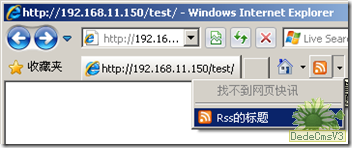|
一、写在前面
二、head区域代码输出 当然继续沿用 http://newsn.net/2009/05/415 中的那个特殊构造的controller 来试验我们今天的内容,当然,这样,是不符合标准的,但是对于初学者是实用的。 1、$html->docType(string $type = ‘xhtml-strict’) 01.html4-strict 02.<!DOCTYPE HTML PUBLIC "-//W3C//DTD HTML 4.01//EN" "http://www.w3.org/TR/html4/strict.dtd"> 03.html4-trans 04.<!DOCTYPE HTML PUBLIC "-//W3C//DTD HTML 4.01 Transitional//EN" "http://www.w3.org/TR/html4/loose.dtd"> 05.html4-frame 06.<!DOCTYPE HTML PUBLIC "-//W3C//DTD HTML 4.01 Frameset//EN" "http://www.w3.org/TR/html4/frameset.dtd"> 07.xhtml-strict 08.<!DOCTYPE html PUBLIC "-//W3C//DTD XHTML 1.0 Strict//EN" "http://www.w3.org/TR/xhtml1/DTD/xhtml1-strict.dtd"> 09.xhtml-trans 10.<!DOCTYPE html PUBLIC "-//W3C//DTD XHTML 1.0 Transitional//EN" "http://www.w3.org/TR/xhtml1/DTD/xhtml1-transitional.dtd"> 11.xhtml-frame 12.<!DOCTYPE html PUBLIC "-//W3C//DTD XHTML 1.0 Frameset//EN" "http://www.w3.org/TR/xhtml1/DTD/xhtml1-frameset.dtd"> 13.xhtml11 14.<!DOCTYPE html PUBLIC "-//W3C//DTD XHTML 1.1//EN" "http://www.w3.org/TR/xhtml11/DTD/xhtml11.dtd">2、$html->charset(string $charset=null) 输出: 1.<meta http-equiv="Content-Type" content="text/html; charset=%s" />这个的%s就是参数哦。 如果还是空的话,就默认是utf-8。 如果不是空的话,就用输入的那个东东代替了。hoho~ 居然没有对输入的charset值进行合法性检测。崩溃。 1.Configure::write('App.encoding','gb2312'); echo $html->charset();这样输出的就是 1.<meta http-equiv="Content-Type" content="text/html; charset=gb2312" />3、$html->meta($type, $url = null, $attributes = array(), $inline = true) 3.1、输出favicon.ico图标 1.echo $html->meta( 'favicon.ico', '/img/favicon.ico',array('type' => 'icon') );这个是官方给的范例中的写法,其实很有误导作用。 也就是说他的第一个参数是啥都行。 相当于下边的这个东东。 1.echo $html->meta( 'icon', '/img/favicon.ico' );1.<link href="/img/favicon.ico" type="image/x-icon" rel="icon" /> <link href="/img/favicon.ico" type="image/x-icon" rel="shortcut icon" />下面是不自定义位置的办法,使用默认值。 1.echo $html->meta('icon');1.<link href="favicon.ico" type="image/x-icon" rel="icon" /> <link href="favicon.ico" type="image/x-icon" rel="shortcut icon" />不过据说还有个bookmark的favicon.ico,不知道为啥没有一并输出。 1.<link href="images/fav.ico" type="image/x-icon" rel="Bookmark" />用它的写法是: 1.echo $html->meta( 'icon', 'favicon.ico', array('rel'=>'Bookmark') );不过这个输出的路径地址是带网址的绝对路径。 很是不爽,所以个人认为Cakephp里面对ico的处理还需要进一步改进。 3.2、输出keywords和Description 1.echo $html->meta( 'keywords', 'enter any meta keyword here' );echo $html->meta( 'description', 'enter any meta description here' );1.<meta name="keywords" content="enter any meta keyword here"/> 2.<meta name="description" content="enter any meta description here"/>3.3、输出自定义属性 1.echo $html->meta(null,null, array( 'name' => 'author', 'content' =>'newsn.net@gmail.com' ) );1.<meta name="author" content="newsn.net@gmail.com"/>3.4、输出rss信息 1. |
echo $html->meta(
2. 'Rss的标题', 3. '/comments/index.rss', 4. array('type' => 'rss') 5.);1.<link href="comments/index.rss" type="application/rss+xml" rel="alternate" title="Rss的标题" />4、$html->css(mixed $path, string $rel = null, array $htmlAttributes = array(), boolean $inline = true)
我觉得这个css语句貌似还算是对的起观众,
因为我一直记不住那段css的html语句。 hoho~~
1.echo $html->css('css');1.<link rel="stylesheet" type="text/css" href="css/css.css" />这个东东的变态的地方就是非要让css文件放到根目录下的css目录中,
而我的习惯是放到images目录下面去。
估计Cakephp的作者看到我下边这句条语句肯定会气晕。
1.echo $html->css('../images/css');1.<link rel="stylesheet" type="text/css" href="css/../images/css.css" />这样的话,还是可以放到images目录下面去。hoho~
1.echo $html->css(array('css1','css2','css3'));1.<link rel="stylesheet" type="text/css" href="css/css1.css" /> 2.<link rel="stylesheet" type="text/css" href="css/css2.css" /> 3.<link rel="stylesheet" type="text/css" href="css/css3.css" />输出多个css,这个css的方法我觉得是目前看到的最棒的函数。
不过对应的其他参数没有做实验。
hoho~ 赞一个先~
5、其他函数
在head区域里面能用到的也许还有:
$html->style(array $data, boolean $inline = true)
1.echo $html->style( 2. array( 'background' => '#633', 3. 'border-bottom' => '1px solid #000', 4. 'padding' => '10px'5. ) 6.);1.background:#633; border-bottom:1px solid #000; padding:10px;看到了没有,连个都<style></style>没得输出,真是个超级垃圾函数。
6、关于上边涉及的函数里面的$inline参数
官方的解释是:
If $inline is set to false, the link tags are added to the $scripts_for_layout variable which you can print inside the head tag of the document.
个人理解是如果这个inline被设置为false后,就崩echo了,echo出不来了。
先在tests_controller里面的index里面设置
1.$this->layout="tests";在/views/tests/index.ctp里面使用helper
1.$html->meta(....,false); 2.$html->css(....,false);注意上边没有echo哦,echo也是输出为空。
然后在/views/layout/tests.ctp里面使用,
这个tests.ctp是在controller的那个index方法里面指定的哦。
1.echo $scripts_for_layout;获得最后的数据,真是好麻烦哦~hoho。
特殊说明一下
上边的$html->style里面的$inline居然和其他的$inline不是一个意思。
这个地方的$inline=true的时候 输出的style内容是在一行内的,看代码的时候没有换行。
1.border:1px;color:red;而为false的时候看代码是换行的,
1.border:1px; 2.color:red;就是说这个inline的意思是“在一行”的意思。 而且必须都要echo。hoho~
并且它在views/tests/index.ctp里面调用的时候,
1.echo $this->style(...,false); 2.echo $this->style(...,true);是在views/layouts/tests.ctp里面的
1.echo $content_for_layout;这里显示出来的哦。hoho~ 真是一个风格迥异的函数。hoho~
此文章由 http://www.ositren.com 收集整理 ,地址为: http://www.ositren.com/htmls/791.html